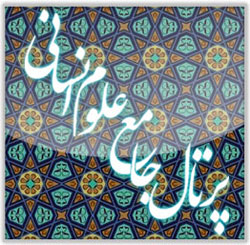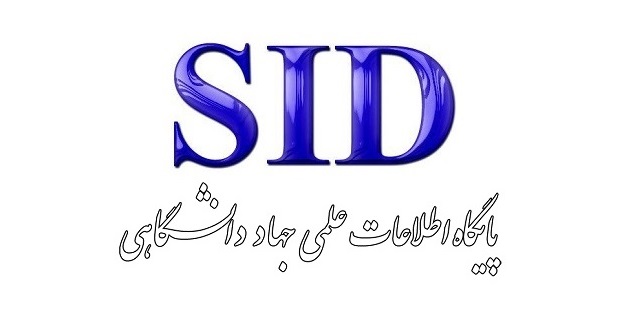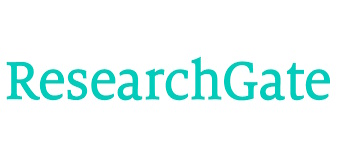Determining the Impact and Prioritization of the Various Roles of Media Influencers on the Lifestyle of Adolescents in Tehran
Keywords:
Influence, Media Figures, LifestyleAbstract
The present study was conducted with the aim of determining the impact and prioritization of the various dimensions of the roles played by prominent media figures (influencers) on the lifestyle of adolescents in Tehran. This research is applied in terms of its objective, and in terms of data type, it is quantitative and categorized as descriptive-correlational. The study population consisted of 25 adolescents from District 5 of Tehran; this number was multiplied by the total of 22 municipal districts of Tehran, leading to a statistical population size of 550 individuals. According to the Morgan Table, the sample size was determined to be 225 participants. The data collection tool was a researcher-made questionnaire containing 155 items derived from theoretical foundations, prior research, expert interviews, and coding. In order to calculate validity, both content and construct validity were assessed, while for reliability estimation, Cronbach’s alpha coefficients, composite reliability, and McDonald's omega were used. The results confirmed that the instruments possessed acceptable levels of validity and reliability. Data analysis was performed using both descriptive and inferential statistics, including Pearson correlation, one-sample t-test, confirmatory factor analysis, and structural equation modeling (SEM), using SPSS version 27 and SmartPLS version 3 software. The findings revealed that various dimensions of influencer roles—including impact on consumers (0.778), creative content production (0.785), brand affiliation (0.791), and social role (0.764)—significantly influenced the lifestyle of adolescents in Tehran. Among these, “brand affiliation” had the highest impact and was ranked first in priority, followed by “creative content production,” “impact on consumers,” and “social role” in the second through fourth priorities, respectively.
Downloads
References
Abbasi, R., & Jafari, M. (2020). The impact of Instagram activities of celebrities on the lifestyle of Iranian users. Communication Research, 101(27), 33-54. https://cr.iribresearch.ir/article_40327.html
Afshar Kohan, M., & Sharafi, R. (2016). Mass media, the socio-economic status of audiences, and the highlighting of knowledge related to a health-oriented lifestyle. Applied Sociology, 27(1), 77-94. https://jas.ui.ac.ir/article_20482.html
Ahmad, A. Y. A. B., Abusaimeh, H., Rababah, A., Alqsass, M., Al-Olima, N., & Hamdan, M. (2024). Assessment of effects in advances of accounting technologies on quality financial reports in Jordanian public sector. Uncertain Supply Chain Management, 12(1), 133-142. https://doi.org/10.5267/j.uscm.2023.10.011
Ahmad, B., Mahmood, A., Sami, A., & Haider, M. (2023). Food choices, clothing patterns and interpersonal relations: effects of social media on youth's lifestyle. Biological and Agricultural Sciences Research Journal, 2023(1), 23-23. https://doi.org/10.54112/basrj.v2023i1.23
Ahmadi, M., & Asgarzadeh, S. (2020). Semiotics of the luxurious lifestyle style on the Instagram pages of Iranian influencers. Journal of Cultural and Communication Studies, 16(60), 273-296. https://www.sid.ir/paper/1033803/fa
Amini, A., Poorshehriyari, M. S., & Abdollahi, A. (2022). Analyzing motivational factors for using social media among adolescents: A qualitative study. Journal of Counseling and Psychotherapy Culture, 13(52), 65-98. https://qccpc.atu.ac.ir/article_14636.html
Ardesch, F., van der Vegt, D., & Kiefte-de Jong, J. (2023). Problematic social media use and lifestyle behaviours in adolescents. Jmir Pediatrics and Parenting. https://doi.org/10.2196/46966
Faraji, M., Abouyeh, A., & Behniafar, M. (2022). The right to access the internet and virtual space with an emphasis on the foundations of this right for children and adolescents in line with an Islamic lifestyle. Islamic lifestyle with a focus on health, 6(1), 33-41. https://www.magiran.com/paper/2754817/
Ghasemi Shal, M., Radfar, B., & Mohseni, A. (2021). Sociological analysis and explanation of the impact of using virtual space (Telegram and Instagram) on the inclination towards a modern lifestyle among girls in Shahriar County (Study among female high school students in Shahriar). Iranian Social Development Studies, 14(53), 51-68. https://www.sid.ir/paper/1063650/fa
Hashemi Sanjani, A., Saravani, M., & Zinali Pour, A. (2024). Predicting family functioning and parenting styles based on the level of parents' use of mass media and virtual communication networks. Cultural and Educational Journal of Women and Family, 18(63), 287-304. https://ensani.ir/fa/article/546078/
Iwanicka, A. (2022). Social media and influencers in the lives of teenagers. Edukacyjna Analiza Transakcyjna(11), 55-70. https://doi.org/10.16926/eat.2022.11.03
Kankaanpää, A., Tolvanen, A., Heikkinen, A., Kaprio, J., Ollikainen, M., & Sillanpää, E. (2022). The role of adolescent lifestyle habits in biological aging: A prospective twin study. Elife, 11, e80729. https://doi.org/10.7554/eLife.80729
Kianpour, A., Rahman Zadeh, M., & Hashemzahi, R. (2023). Factors affecting fertility with an emphasis on virtual social networks. Cultural and Educational Journal of Women and Family, 18(64), 37-53. https://ensani.ir/fa/article/546081/
Moghaddam, S. H., Imam Qoli Zadeh, A., & Sahib al-Dari, M. (2024). Influencer marketing: Identifying and explaining the psychological effects of social media influencers on consumers (Case study: Female students at Mazandaran University). Modern Marketing Research, 13(3), 23-48. https://nmrj.ui.ac.ir/article_27802.html
Oktaviani, D. (2020). Influence of Social Media on Student Lifestyle in Metro City. Arkus, 6(1), 80-85. https://doi.org/10.37275/arkus.v6i1.79
Rafti. (2021). The role of celebrity culture on the lifestyle of adolescents. Educational and Psychological Studies of the Family, 2(4), 95-114. https://mtr.jz.ac.ir/article_173834.html
Razipour, P. (2018). A sociological examination of lifestyle with an emphasis on the Instagram social network in 2018. Sociology of Lifestyle, 4(11), 137-167. https://sls.tabrizu.ac.ir/article_9335.html
Rezaiyan, A., & Edrisi, M. (2018). The impact of social networks on the lifestyle of the fourth generation. Scientific Journal of Intercultural Studies, 13(34), 9-35. https://www.sid.ir/paper/513266/fa
Sadighi, M., Heydari, A. R., & Mazaher, R. (2020). Pathology of the role of virtual social networks in the upbringing of adolescents. Educational and Psychological Studies of the Family, 1(2), 95-119. https://ensani.ir/fa/article/570038/
Sahu, M., Gandhi, S., Sharma, M. K., & Marimuthu, P. (2020). Social media use and health promoting lifestyle: an exploration among Indian nursing students. Investigación Y Educación en Enfermería, 38(2). https://doi.org/10.17533/udea.iee.v38n2e12
Xi, Y. (2023, May 19-21, 2023). Social Media and Lifestyle: The Lifestyle Integration Path for Brand Communication. Proceedings of the 2nd International Conference on Bigdata Blockchain and Economy Management, Hangzhou, China.
Downloads
Published
Submitted
Revised
Accepted
Issue
Section
License
Copyright (c) 2025 زهرا جعفری, علی فلاح, شایسته واردی, سید احمد جعفری, صاحب احمدی (نویسنده)

This work is licensed under a Creative Commons Attribution-NonCommercial 4.0 International License.








